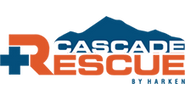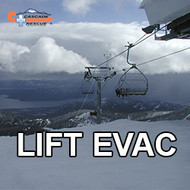Lift Evacuation
Posted by Dana Jordan on 9th Oct 2019
Lift evacuation is likely one of, if not the most hazardous task an employee of a ski resort will perform even though it is not an inherently dangerous task. People safely work at height every day with an accident rate lower than that of driving an automobile. What makes the activities surrounding lift evacuation so dangerous is that it is a “Low Frequency, High Risk” task. Low frequency in that lifts do not break down regularly (if they are properly maintained). High risk in that there is often little time and frequency devoted to adequately train those engaged in the process of evacuating a lift. In short, it doesn’t happen often and neither does training for the event.
This brief blog post is simply to apprise you of the current state of the new Lift Evacuation Guide and to offer some key information and recommendations regarding lift evacuation.
The ski industry has seen great changes in practices and regulations over the last few years. As such, standards created by ANSI and OSHA have very much come to the forefront of operations. Two key ANSI standards that everyone should be aware of are: B77.1 and Z359. If you don’t have copies of those standards, we suggest you visit the ANSI website and acquire them. Specific to those standards are the required use of autolocking carabiners and use of “life safety rope” with a breaking strength of not less than 5,000 pounds – also see OSHA 1910 and 1926. Generally speaking, any OSHA regulation will supersede other standards.
Another recommendation based upon commonly accepted practices is for the belayer wear at minimum a seat harness and use some form of auto-stopping belay device such as a Petzl I’d Evac or other similar. This ensures that if the belayer loses contact with the rope, the descent will auto-stop. the use of a Rope Saver or Line Belay device is also recommended.
A word on Rope Savers and Evac “T” Seats.
Rope Savers: Inspect for abnormal wear, bending or burrs around the area of rope travel. Ensure that the Line Saver is free and clear of obstructions. If you are using a Line Belay, inspect the area where the belay is welded to the Line Saver. Any cracks or abnormalities should be reported to Cascade Rescue and the device "red tagged" until the device is professionally inspected and repaired or replaced.
If any Rope Savers have what appears to be a washer welded to the lower section, they should be retired. This is NOT a recall, but a recommendation from the manufacturer based upon the age of these devices as "rescue equipment" and the fact that many people are using them inappropriately. These were made over 20 years ago with the intent of using that point as an attachment point for a tag line. Since then, they have been inappropriately used as a belay point for a mechanical advantage system. These points are not rated for a "man load" and will fail. A Line Belay should be used if a mechanical advantage system is desired.
Chairlift Evacuation Seats - “T Seats” All chairlift evacuation seats made by Cascade Rescue Company should be inspected annually before use and after every use. The inspector should make sure there are no cracked welds, significant dents or deformations to the tubing or seat mounting plate. The screws and nuts that hold the seat to the seat mounting plate should be tight and free of rust and corrosion. Any Chair Lift Evacuation Seat that has a wooden base should be retired and replaced due to age, regardless of outward appearance.





